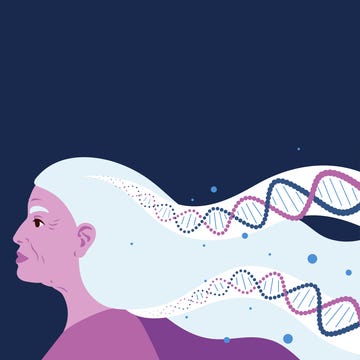Chronic pain – defined as pain that lasts beyond 12 weeks – affects an estimated 28m people in the UK, with back pain alone accounting for more than 12m work days lost every year. It can affect sleep, work and daily life, and can linger for weeks, months, or even years after the initial cause has healed. Unfortunately, it’s also a condition that’s poorly understood.
What experts do know is that unlike acute pain, which is usually a response to injury or illness and your body’s way of telling you something is wrong, chronic pain may not always have a clear physical cause. For some, it stems from conditions such as arthritis, fibromyalgia or nerve damage. For others, the nervous system itself becomes overactive, sending pain signals even when no tissue damage is present. This rewiring of pain pathways can make chronic pain feel just as real and intense as acute pain, even when the original injury has healed.
It’s a complex picture – but if you’re suffering, here are some evidence-backed strategies to try.
Try pain reprocessing therapy
It’s not unusual for people with chronic pain to become very scared of physical activity, believing that movement will cause harm or worsen their condition. But many common pain conditions, such as lower back pain, are not typically linked to serious structural damage – the spine, for example, is incredibly resilient, and protective instincts like bracing or avoiding movement can actually prolong discomfort. Pain reprocessing therapy (PRT) can help here, as it helps retrain the brain to interpret pain signals differently. Key techniques include graded exposure, where movement is reintroduced gently, helping the brain learn that activity is safe. Visualisation, breathwork and reflective journalling are tools that support this, and resources such as Flippin’ Pain provide helpful explanations and videos.
Influence your nervous system
You’ve probably heard of TENS therapy in connection with labour, but using a TENS machine can also help reduce pain in conditions such as osteoarthritis and fibromyalgia, as the mild electrical currents passed to your nerves help to disrupt pain signals. Another alternative therapy, acupuncture, has been widely studied and research shows it can provide significant pain relief for chronic conditions such as migraines and lower back pain, likely due to its effects on nervous system pathways.
‘Contrast baths’ harness the power of hot and cold therapy and can also be enormously helpful; they stimulate circulation and may help to reduce swelling while also delivering a pain-relieving ‘reset’ to overactive nerves. To try it, fill one container with warm water and one with cold; submerge the affected area in the warm water for 3-4 minues, then switch to the cold water for one minute. Even using a weighted blanket can help – all of these can help modulate pain perception by influencing the body’s sensory and nervous systems.
Engage in ‘meaningful distraction’
Shifting focus away from pain can be a powerful tool for relief. A study in The Journal Of Pain found that engaging in creative activities such as painting, music or crafting reduced pain levels and improved mood. This is because the brain’s pain processing centres overlap with those responsible for attention and emotions – so when fully engaged in a mentally absorbing task, pain perception can decrease.
Lean into body’s natural pain relief response
Stress, anxiety and trauma can heighten pain perception, making discomfort feel more intense. And pain itself causes stress, which affects pain control chemicals in the brain. Cognitive behavioural therapy (CBT) is one of the most effective tools for breaking this cycle, as it can help you reframe your thoughts around chronic pain and develop coping strategies.
Chronic pain can be a result of overlooked medical issues such as vitamin deficiencies, autoimmune disorders or nerve dysfunction. If you experience persistent pain without a clear diagnosis, it may be worth discussing further testing with your doctor.
Pain management requires a multifaceted approach, integrating psychological strategies, medical insight and adaptable daily practices. Small changes – whether in mindset, routine or medical approach — really can make a significant difference. Recognising that pain is shaped by the mind as much as the body doesn’t mean it’s ‘all in your head’ – it simply means you have more tools at your disposal.













